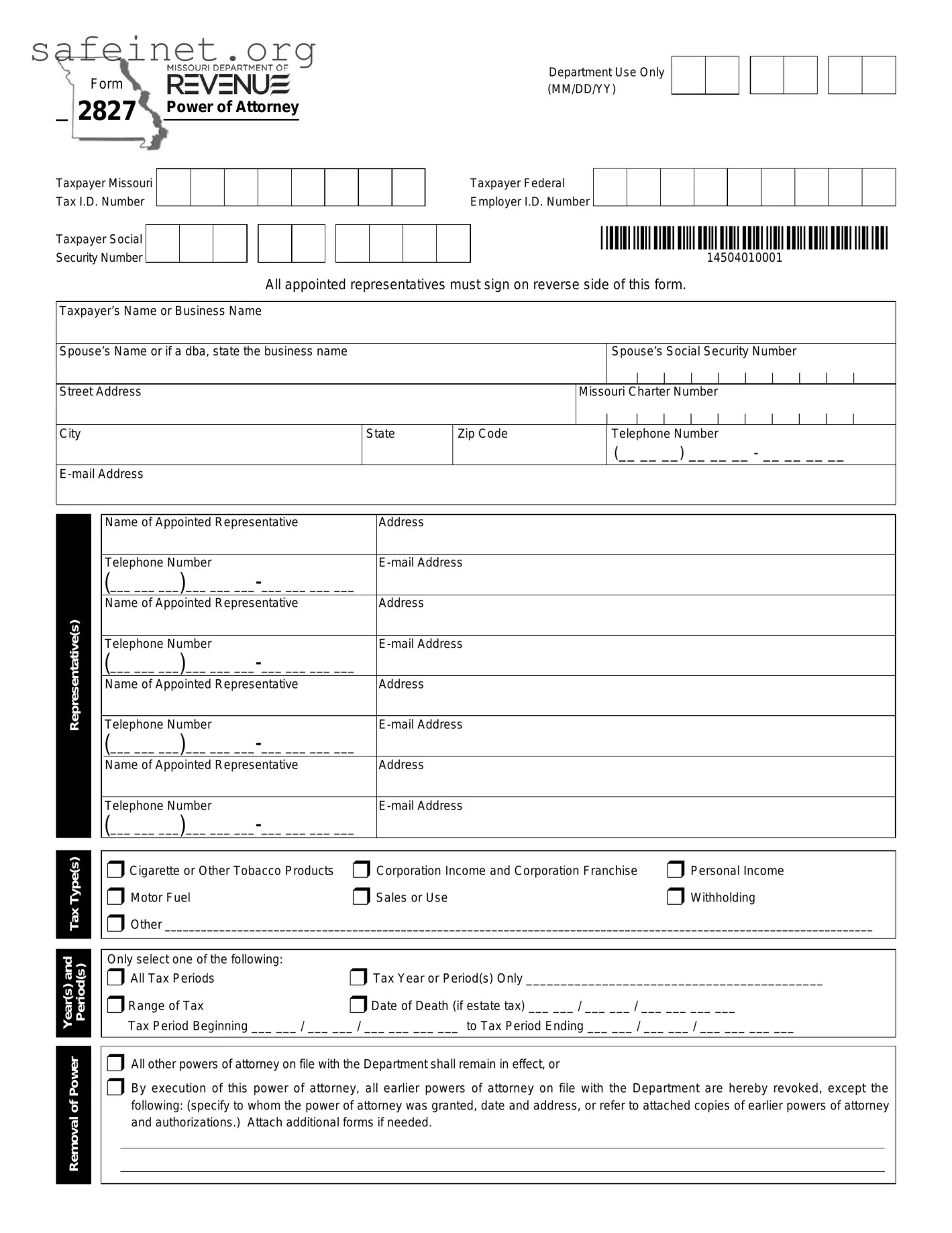The IRS Form 2848, Power of Attorney and Declaration of Representative, is quite similar to Form 2827. Both forms allow individuals to appoint someone to represent them before the IRS. They enable the designated representative to receive and respond to IRS communications on behalf of the taxpayer. The key difference is that Form 2848 can be used not only for tax matters but also for other IRS-related issues, making it broader in scope compared to Form 2827.
Form 4506, Request for Copy of Tax Return, shares similarities with the Tax POA Form 2827 in that both involve the taxpayer's consent and provide authorization for access to specific tax information. However, while Form 2827 gives authority to a representative to act on behalf of a taxpayer, Form 4506 specifically allows individuals to obtain copies of previously filed tax returns, thus serving a different purpose in the tax process.
Form 8821, Tax Information Authorization, is another document that is closely associated with Form 2827. Like Form 2827, it allows a third party to access a taxpayer's confidential tax information. The main distinction lies in the fact that Form 8821 does not grant the representative the right to represent the taxpayer in dealings with the IRS; rather, it only authorizes them to receive information, limiting their authority compared to Form 2827.
The Durable Power of Attorney is often compared to the Tax POA Form 2827. While both documents allow a designated individual to act on behalf of another, the Durable Power of Attorney covers a broader range of legal and financial matters, extending beyond just tax issues. Additionally, a Durable Power of Attorney remains effective even if the principal (the person granting authority) becomes incapacitated, unlike the specific focus and temporary nature of Form 2827.
The Medical Power of Attorney bears some resemblance to Form 2827 in that both allow individuals to appoint someone to make decisions on their behalf. However, the Medical Power of Attorney pertains specifically to health care decisions, while Form 2827 is limited to tax-related matters. This document is crucial during situations where individuals are unable to express their medical wishes, showcasing a significant difference in context and application.
Form W-7, Application for IRS Individual Taxpayer Identification Number, is related to Form 2827 in that both must be used to facilitate interactions with the IRS. While not a power of attorney in itself, Form W-7 allows non-resident aliens and others who do not qualify for a Social Security number to obtain an ITIN for tax purposes. The purpose of both forms is to ensure appropriate representation and compliance with IRS regulations.
The Limited Power of Attorney is another document that can be likened to the Tax POA Form 2827. Just as the Tax POA form allows for representation in specific tax matters, a Limited Power of Attorney grants a designated individual authority to act in certain, defined situations. The scope of the authority can vary, but like Form 2827, it confines the representative's powers to specified actions rather than granting broader authority.
Finally, the General Power of Attorney is broadly similar to Form 2827, as both permit someone to act on behalf of another. However, the General Power of Attorney is extensive and covers a wide range of financial and legal matters, not just taxes. This type of document usually comes into play for more comprehensive, everyday decisions, contrasting with the focused intent of Form 2827 in dealing specifically with tax matters.


